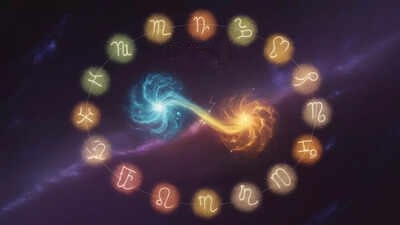Ashtakoot, also known as Ashtakoota or Ashtakoot Milan, is an important system in Vedic astrology used to evaluate the compatibility of two individuals for marriage. It's based on matching the horoscopes (Janam Kundali) of the prospective bride and groom. The system assesses compatibility in eight different aspects, each carrying a different weightage, totaling 36 points. The eight aspects (Kootas) are:
1. **Varna (1 point)**: It represents the spiritual compatibility, matching the ego and the caste system of the individuals.
2. **Vashya (2 points)**: This aspect determines the power dynamics in the relationship, indicating which partner would be more dominating or influential.
3. **Tara (3 points)**: Tara Koota assesses the health and well-being of the couple by comparing the birth stars (Nakshatras) of both individuals.
4. **Yoni (4 points)**: This aspect represents sexual compatibility, comfort, and satisfaction. Each Nakshatra is associated with an animal symbol that reflects sexual behavior and temperament.
5. **Graha Maitri (5 points)**: It evaluates the intellectual and mental compatibility, the strength of love and friendship between the couple, by comparing the ruling planets of their Moon signs.
6. **Gana (6 points)**: This aspect looks at the temperament and behavior compatibility by classifying individuals into three categories - Deva (Godly), Manushya (Human), and Rakshasa (Demon).
7. **Bhakoot (7 points)**: It measures the relative influence of one partner on the other, looking at factors like health, happiness, and mutual understanding. It's based on the Moon sign compatibility.
8. Nadi (8 points):The most significant aspect, Nadi Koota, assesses genetic compatibility and health of the offspring. It categorizes individuals into three Nadis - Aadi (Start), Madhya (Middle), and Antya (End).
A score is calculated based on how well the charts match in each of these aspects. A higher score suggests greater compatibility. Traditionally, a score of 18 or above is considered favorable for marriage. However, cultural and regional variations in the interpretation of Ashtakoot may exist. Additionally, it's important to remember that Ashtakoot is just one part of a comprehensive horoscope matching process and should be considered along with other factors in Vedic astrology.
Detailed explanations of each of the eight Ashtakootas used in Vedic astrology for horoscope compatibility:
1. **Varna (1 point)**:
- Represents the spiritual compatibility and the social status or caste system.
- Based on the Moon sign, it categorizes individuals into four varnas: Brahmins (priests), Kshatriyas (warriors), Vaishyas (traders), and Shudras (workers).
- The match is considered good if the groom's varna is at least one point higher than the bride's.
2. Vashya (2 points):
- Assesses the degree of mutual attraction and influence between partners, indicating who will be more dominant.
- Each zodiac sign is categorized into five types: Chatushpada (quadruped), Dwipada (human), Jalchar (water-based), Vanchar (wild animals), and Keet (insects).
- Compatibility is determined by how well these categories match between the couple's Moon signs.
3. **Tara (3 points)**:
- Focuses on the well-being and fortune of the couple by comparing their Nakshatras (birth stars).
- There are 27 Nakshatras, and compatibility is assessed by counting the distance from the bride's Nakshatra to the groom's. The result is divided into nine, and certain numbers are considered auspicious.
4. **Yoni (4 points)**:
- Indicates sexual and biological compatibility, and temperament.
- Each Nakshatra is associated with an animal symbol, reflecting natural sexual behavior and instincts.
- A total of 14 animals are used, and compatibility is based on the natural friendship, neutrality, or enmity between these animals.
5. **Graha Maitri (5 points)**:
- Assesses the mental and intellectual compatibility, friendship, and affection.
- Based on the planetary lords of the Moon signs of the couple.
- Compatibility is evaluated by the relationship between these planetary lords (friendly, neutral, or enemy).
6. **Gana (6 points)**:
- Evaluates temperament and behavior, classifying individuals into three categories: Deva (godly), Manushya (human), and Rakshasa (demonic).
- Based on the Nakshatra of the Moon at birth.
- The best match occurs within the same Gana, while Deva and Rakshasa Gan are considered challenging.
7. **Bhakoot (7 points)**:
- Relates to overall health, mutual understanding, and happiness.
- Based on the relative position of the Moon signs in the zodiac.
- It looks at the distance between the Moon signs, with certain distances considered auspicious and others inauspicious.
8. **Nadi (8 points)**:
- Most significant, related to health and genetics, particularly the health of offspring.
- The three Nadis are Adi (beginning), Madhya (middle), and Antya (end), representing the Prakriti (basic constitution) of the individual.
- Same Nadi is generally considered inauspicious, as it indicates a similar genetic makeup and may affect the health of children.
In Ashtakoot Milan, the total points from all these aspects are summed up to reach a final score out of 36. Scores above 18 are generally considered favorable, but many astrologers recommend considering other factors in the horoscopes as well, for a comprehensive understanding of compatibility.






